Orchestra-80
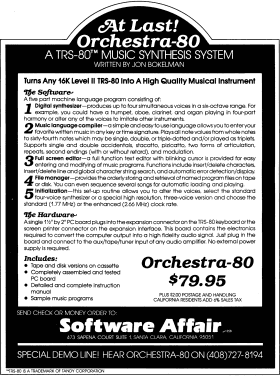
Software Affair advertisement from the July 1980 issue of 80 Microcomputing
Like many personal computers at the time, the TRS-80 Model I had fairly primitive built-in sound capabilities. That changed in 1980 with the introduction of the Orchestra-80, a small $79.95 unit that plugged into the TRS-80 and could play music with four simultaneous voices over a six octave range. Orchestra-80 was sold by Software Affair, Ltd., a company created by Bryan Eggers and Jon Bokelman. It became one of the best remembered hardware add-ons for the TRS-80.
Origins
Orchestra-80 had predecessors in two earlier kit products for S-100 computers. In 1977, Software Technology Corporation introduced the STC Music System, which featured “Musical Arrangements by Jon Bokelman.” In 1979, after the STC Music System was no longer available, California Software Co. introduced the Software Music Synthesis System. Also created by Jon Bokelman, the Software Music Synthesis System, or SMS, maintained the same syntax as the STC Music System, even though it was a completely different product.
According to Bryan Eggers, Jon Bokelman demonstrated a prototype system for the TRS-80 (presumably a variant of the SMS) at a computer club meeting. The club members were amazed when the prototype played Bach in four-part harmony. Some even looked under the table for a tape recorder to see if they were being hoaxed! The demonstration was impressive enough that Eggers and Bokelman founded Software Affair just a few days later and Orchestra-80 was born.
Software
The Orchestra-80 manual describes the included software as consisting of five components integrated into one program:
-
A digital synthesizer with a six-octave range that could play three notes simultaneously (four if the Model I was equipped with speedup hardware such as the Archbold Speedup Board). The synthesizer used four “tone color registers” to imitate four instruments: trumpet, oboe, clarinet, and pipe organ. Changing the registers could synthesize other instruments or “make strange new sounds.”
-
A music language compiler which allowed transcription of written music into a form that the Orchestra-80 synthesizer could understand. The Orchestra-80 language was not just a simple representation of sheet music, but a language of its own:
The music language was designed to allow the direct transcription of virtually any written music to a symbolic form used by the computer. Non-musicians will find the language simple to learn and easy to use since no previous musical training or knowledge is required. Yet, in spite of its simplicity, the language has all the features and capabilities required by the advanced musician.
-
A full screen text editor for entering the musical code.
-
A file manager to load and save music on disk or tape.
-
Configuration routines to allow important software options be saved between sessions.
Because of the specialized nature of music itself, I suspect that the Orchestra-80 initially appealed primarily to experienced musicians. But that changed after users began transcribing music for the Orchestra-80 and making it available on bulletin board systems around the country. After this happened, even musically inexperienced users could play music on their Orchestra-80 and it became well known. One musician named Robb Murray even created a 45 RPM record called Classical Mosquito! which consisted entirely of music rendered using an Orchestra-80.
Legacy
The Orchestra-80 was monophonic only, but this limitation was addressed in 1981 with the introduction of the stereo Orchestra-85. The Orchestra-80 remained less expensive than the Orchestra-85 and continued to be sold for several years. But both were soon overshadowed by a more popular model, the Orchestra-90 for the TRS-80 Model III and 4 in 1982.
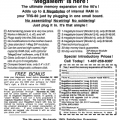
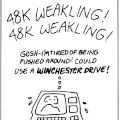
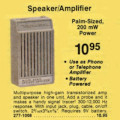
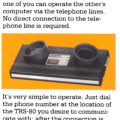










Al Hartman says:
There was an earlier product which predates the Orch-80. It was called “The Music Box,” and it had a companion product called “The Rhythm Box.”
They were made by Newtech Electronics, the forerunner of Zebra Systems, Inc. that made products for the Timex/Sinclair line of computers, and who made the Spectrum Voice Pak for Spectrum Projects for the Coco.
The Music Box also started out on S-100 systems.
A tiny zap to change the port number used allowed the software on each product to be used on the other.
The Music Box was a better product because it was designed as a professional product in an external box and had filters on the sound output that provided cleaner sound.
It was a shame that the Orch-80 got all the glory, but it was cheaper and users didn’t really care that it sounded better.
Jeff Majette says:
Yes, I owned both The Music Box and Orchestra 85. The Music Box was a superior piece of hardware. However, I found The Music Box software difficult to program music on. Orchestra 85’s software was much easier to program and allowed for more musical expression. The percussion channel added a little extra “kick” to compositions as well. Ah, the memories!